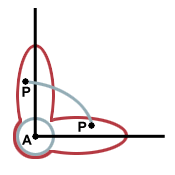Please wait while we process your payment
If you don't see it, please check your spam folder. Sometimes it can end up there.
If you don't see it, please check your spam folder. Sometimes it can end up there.
Please wait while we process your payment
Get instant, ad-free access to our grade-boosting study tools with a 7-day free trial!
Learn more



This site is protected by reCAPTCHA and the Google Privacy Policy and Terms of Service apply.
Create Account
Select Plan
Payment Info
Start 7-Day Free Trial!

Annual
2-49 accounts
$22.49/year + tax
50-99 accounts
$20.99/year + tax
Select Quantity
Price per seat
$29.99 $--.--
Subtotal
$-.--
Want 100 or more? Request a customized plan
You could save over 50%
by choosing an Annual Plan!

SAVE OVER 50%
compared to the monthly price!
| Focused-studying | ||
| PLUS Study Tools | ||
| AP® Test Prep PLUS | ||
| My PLUS Activity | ||
$22.49/month + tax
Save 25%
on 2-49 accounts
$20.99/month + tax
Save 30%
on 50-99 accounts
| Focused-studying | ||
| PLUS Study Tools | ||
| AP® Test Prep PLUS | ||
| My PLUS Activity | ||
No Fear provides access to Shakespeare for students who normally couldn’t (or wouldn’t) read his plays. It’s also a very useful tool when trying to explain Shakespeare’s wordplay!
Erika M.
I tutor high school students in a variety of subjects. Having access to the literature translations helps me to stay informed about the various assignments. Your summaries and translations are invaluable.
Kathy B.
Teaching Shakespeare to today's generation can be challenging. No Fear helps a ton with understanding the crux of the text.
Kay H.
No Fear provides access to Shakespeare for students who normally couldn’t (or wouldn’t) read his plays. It’s also a very useful tool when trying to explain Shakespeare’s wordplay!
Erika M.
I tutor high school students in a variety of subjects. Having access to the literature translations helps me to stay informed about the various assignments. Your summaries and translations are invaluable.
Kathy B.
Teaching Shakespeare to today's generation can be challenging. No Fear helps a ton with understanding the crux of the text.
Kay H.
Create Account
Select Plan
Payment Info
Start 7-Day Free Trial!
You will only be charged after the completion of the 7-day free trial.
If you cancel your account before the free trial is over, you will not be charged.
You will only be charged after the completion of the 7-day free trial. If you cancel your account before the free trial is over, you will not be charged.
Order Summary
Annual
7-day Free Trial
SparkNotes PLUS
$29.99 / year
Annual
Quantity
51
PLUS Group Discount
$29.99 $29.99 / seat
Tax
$0.00
SPARK25
-$1.25
25% Off
Total billed on Nov 7, 2024 after 7-day free trail
$29.99
Total billed
$0.00
Due Today
$0.00
Promo code
This is not a valid promo code
Card Details
By placing your order you agree to our terms of service and privacy policy.
By saving your payment information you allow SparkNotes to charge you for future payments in accordance with their terms.
Powered by stripe
Legal
Google pay.......



Please wait while we process your payment

Sorry, you must enter a valid email address
By entering an email, you agree to our privacy policy.
Please wait while we process your payment

Sorry, you must enter a valid email address
By entering an email, you agree to our privacy policy.
Please wait while we process your payment

Your PLUS subscription has expired
Please wait while we process your payment
Please wait while we process your payment

Defining Rotation and its Variables
We begin our study of rotational motion by defining exactly what is meant by rotation, and establishing a new set of variables to describe rotational motion. From there we will revisit kinematics to generate equations for the motion of rotating bodies.
We all know generally what it means if an object is rotating. Instead of translating, moving in a straight line, the object moves about an axis in a circle. Frequently, this axis is part of the object that is rotating. Consider a bicycle wheel. When the wheel is spinning, the axis of rotation is simply a line going through the center of the wheel and perpendicular to the plane of the wheel.
In translational motion, we were able to characterize objects as point particles moving in a straight line. With rotational motion, however, we cannot treat objects as particles. If we had treated the bicycle wheel as a particle, with center of mass at its center point, we would observe no rotation: the center of mass would simply be at rest. Thus in rotational motion, much more than in translational motion, we consider objects not as particles, but as rigid bodies. We must take into account not only the position, speed and acceleration of a body, but also its shape. We can thus formalize our definition of rotational motion as such:
A rigid body moves in rotational motion if every point of the body moves in a circular path with a common axis.
This definition clearly applies to a bicycle wheel, due to its circular
symmetry. But what about objects without a circular shape? Can they move in
rotational motion? We shall show that they can by a figure:

Now that we have a clear definition of exactly what rotational motion is, we can define variables that describe rotational motion.
It is possible, and beneficial, to establish variables describing rotational motion that parallel those we derived for translational motion. With a set of similar variables, we can use the same kinematic equations we used with translational motion to explain rotational motion.
Please wait while we process your payment





